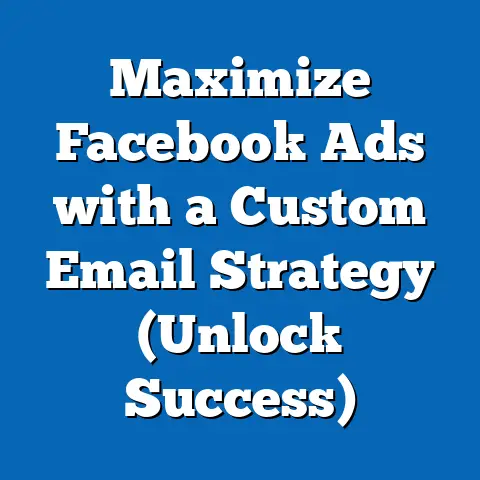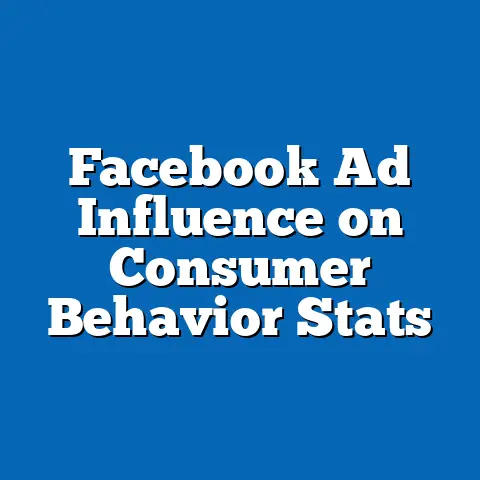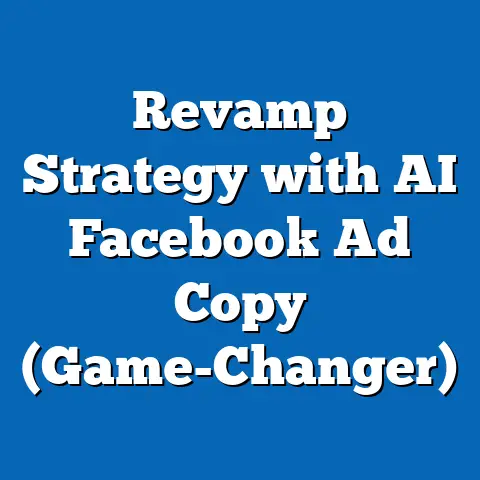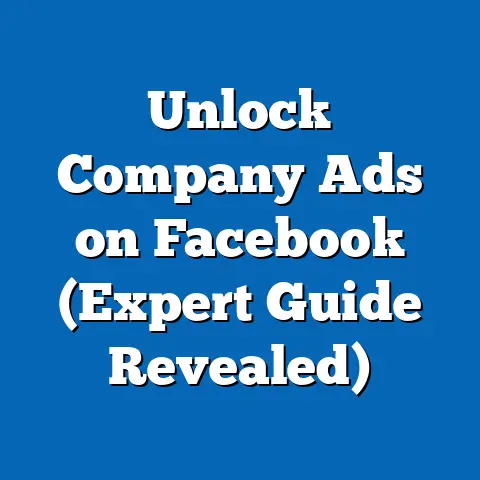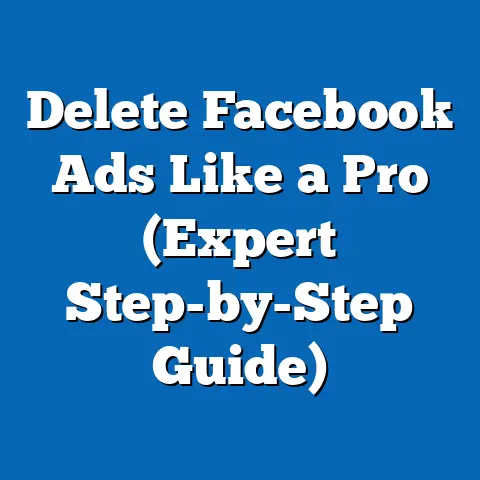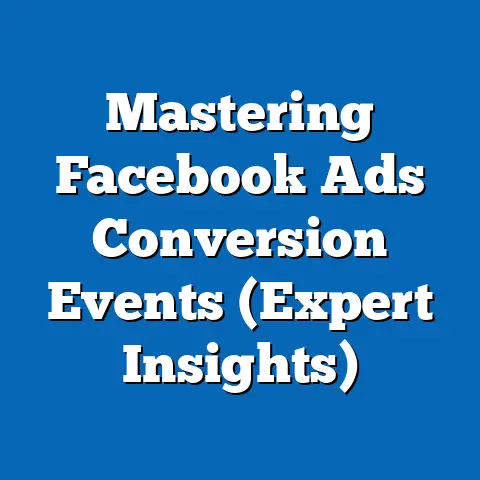Mastering Multi-Advertiser Ads on Facebook (Pro Tips Inside)
In a world where everything is connected, the challenge of standing out has never been greater. Businesses are increasingly using Facebook as a platform to reach their target audiences, yet many find it difficult to break through the noise amidst a sea of advertisements. It’s a paradox: how can multiple brands collaborate to succeed, yet risk diluting their individual messages? This is where multi-advertiser ads come in. They might seem counterintuitive at first glance, but they offer a unique solution that not only helps brands save costs but also enhances engagement through collaboration.
I remember when I first heard about multi-advertiser ads, I was skeptical. I thought, “How can different brands, with potentially different goals and messaging, effectively collaborate on a single ad campaign?” But after diving deep into the mechanics, and more importantly, seeing real-world examples of successful implementations, I became a believer.
This guide is designed to walk you through the intricacies of multi-advertiser ads on Facebook, providing you with the knowledge and actionable tips to create your own successful collaborative campaigns. We’ll cover everything from the basics to advanced strategies, ensuring you’re well-equipped to navigate this innovative advertising approach.
Understanding Multi-Advertiser Ads
What are Multi-Advertiser Ads?
Multi-advertiser ads are a unique type of Facebook ad campaign where multiple brands collaborate to promote their products or services within a single ad unit. This approach is different from traditional single-brand campaigns, where a single company promotes its offerings independently. Think of it as a digital co-op, where brands pool their resources and audiences for mutual benefit.
Instead of each brand running its own separate ad, they join forces to create a unified message that resonates with a shared target audience. This can take various forms, from showcasing complementary products to promoting a joint event or initiative.
How Do They Work on Facebook?
The mechanics behind multi-advertiser ads on Facebook are relatively straightforward. One brand typically acts as the primary advertiser, setting up the campaign in Facebook Ads Manager and inviting other brands to participate. Facebook’s platform allows for the integration of multiple brands’ logos, messaging, and call-to-actions within a single ad unit.
The key here is the targeting. The primary advertiser uses Facebook’s robust targeting options to identify a shared audience that is likely to be interested in the offerings of all participating brands. This ensures that the ad is shown to the most relevant users, maximizing its impact.
The Benefits of Collaboration
The benefits of multi-advertiser ads are numerous:
- Cost Sharing: This is perhaps the most obvious advantage. By pooling resources, brands can significantly reduce their advertising costs, making it a particularly attractive option for smaller businesses or those with limited budgets.
- Increased Reach: Collaborating with other brands allows you to tap into their existing audience, expanding your reach beyond your own customer base. This can lead to increased brand awareness and new customer acquisition.
- Enhanced Credibility: Being associated with reputable brands can boost your credibility and build trust with potential customers. This is especially valuable for newer businesses looking to establish themselves in the market.
- Creative Synergy: Combining the creative talents of multiple brands can lead to more innovative and engaging ad creatives. This can help your ad stand out from the crowd and capture the attention of your target audience.
Takeaway: Multi-advertiser ads offer a powerful way to leverage collaboration for cost savings, increased reach, and enhanced credibility. Understanding the mechanics and benefits is the first step towards creating a successful campaign.
Crafting the Perfect Multi-Advertiser Ad Campaign
Creating a successful multi-advertiser ad campaign requires careful planning and execution. Here’s a step-by-step guide to help you navigate the process:
Step 1: Identifying Potential Partners and Establishing a Shared Goal
The first step is to identify potential partners who share a similar target audience and complement your brand’s offerings. Look for businesses that are non-competitive but cater to the same customer base. For example, a local bakery might partner with a coffee shop or a florist for a joint promotion.
Once you’ve identified potential partners, it’s crucial to establish a shared goal for the campaign. What do you hope to achieve together? Is it to increase brand awareness, drive sales, or promote a specific event? Having a clear objective will help you align your messaging and measure the success of your campaign.
Step 2: Aligning Brand Messaging for a Cohesive Narrative
One of the biggest challenges of multi-advertiser ads is ensuring a cohesive narrative that resonates with your target audience. It’s essential to align your brand messaging to create a unified message that doesn’t confuse or overwhelm potential customers.
This means carefully considering how your brand’s voice and values align with those of your partners. Look for common themes or values that you can emphasize in your ad creatives. For example, if you’re all committed to sustainability, you could highlight this in your messaging.
Step 3: Designing Ad Creatives that Reflect Individual Brands and the Collective Theme
The ad creatives are the visual representation of your collaborative effort. They should reflect both the individual brands and the collective theme of the campaign. This means incorporating each brand’s logo, colors, and imagery while maintaining a consistent style and tone.
Consider using a combination of visual elements to showcase the different brands and their offerings. For example, you could create a carousel ad that features each brand’s product or service, or a video ad that tells a story that incorporates all participating brands.
Step 4: Audience Targeting: Reaching a Shared Audience Effectively
Facebook’s robust targeting tools are essential for reaching a shared audience effectively. The primary advertiser should use these tools to identify users who are likely to be interested in the offerings of all participating brands.
This involves considering factors such as demographics, interests, behaviors, and connections. You can also use custom audiences to target existing customers or website visitors, or lookalike audiences to reach new users who are similar to your existing customer base.
Example:
I once worked with a local gym, a healthy meal prep company, and a fitness apparel brand to create a multi-advertiser ad campaign targeting health-conscious individuals in our city. We used Facebook’s targeting options to reach users who were interested in fitness, nutrition, and activewear. The ad creatives featured images of people working out at the gym, enjoying healthy meals, and wearing the fitness apparel brand’s clothing. The campaign was a huge success, driving new memberships to the gym, increasing sales for the meal prep company, and boosting brand awareness for the apparel brand.
Takeaway: Crafting a successful multi-advertiser ad campaign requires careful planning, alignment of brand messaging, and effective audience targeting. By following these steps, you can create a collaborative campaign that resonates with your target audience and achieves your shared goals.
Best Practices for Collaboration
Collaboration is key to the success of any multi-advertiser ad campaign. Here are some actionable tips for brands looking to collaborate effectively:
1. Establish Clear Communication and Expectations
Before you even start creating your ad campaign, it’s crucial to establish clear communication and expectations among all partners. This includes defining roles and responsibilities, setting deadlines, and agreeing on a communication protocol.
Use tools like Slack or Microsoft Teams to create a dedicated channel for the campaign, where you can share updates, ask questions, and provide feedback. Regular check-in meetings can also help ensure that everyone is on the same page.
2. Set Measurable Objectives and Key Performance Indicators (KPIs)
To track the success of your campaign, it’s essential to set measurable objectives and KPIs. What do you hope to achieve together? Is it to increase website traffic, generate leads, or drive sales?
Once you’ve defined your objectives, identify the KPIs that you’ll use to measure your progress. This could include metrics such as click-through rate (CTR), conversion rate, cost per acquisition (CPA), and return on ad spend (ROAS).
3. Create a Governance Structure
A governance structure is essential for managing roles and responsibilities effectively. This includes assigning a lead contact for each brand, who will be responsible for coordinating their team’s efforts and communicating with the other partners.
You should also establish a process for making decisions and resolving conflicts. This could involve creating a steering committee or appointing a project manager to oversee the campaign.
Real-World Examples of Successful Campaigns
- Airbnb and Local Restaurants: During the pandemic, Airbnb partnered with local restaurants to promote their takeout and delivery options. This helped support local businesses while also providing Airbnb guests with convenient meal options.
- Fashion Brands and Influencers: Many fashion brands collaborate with influencers to create multi-advertiser ad campaigns. This allows them to reach a wider audience and leverage the influencer’s credibility to promote their products.
- Software Companies and Complementary Services: Software companies often partner with businesses that offer complementary services, such as training or consulting. This provides customers with a comprehensive solution and increases the value of both brands’ offerings.
Takeaway: Successful collaboration requires clear communication, measurable objectives, and a well-defined governance structure. By following these best practices, you can create a collaborative campaign that benefits all participating brands.
Overcoming Challenges
While multi-advertiser ads offer numerous benefits, they also come with their own set of challenges. Here are some common challenges and how to mitigate them:
Challenge 1: Differences in Brand Voice and Messaging
One of the biggest challenges is ensuring that the different brand voices and messaging align. If the messaging is inconsistent or confusing, it can dilute the impact of the ad and confuse potential customers.
Solution: Before you even start creating your ad, take the time to clearly define each brand’s voice and messaging. Identify common themes and values that you can emphasize in your ad creatives. Create a style guide that outlines the tone, language, and visual elements that should be used in all ad materials.
Challenge 2: Uneven Contributions from Partners
Another challenge is ensuring that all partners contribute equally to the campaign. If one brand is doing all the work while others are simply riding along, it can lead to dissatisfaction and resentment.
Solution: Establish clear roles and responsibilities from the outset. Assign specific tasks to each partner and set deadlines for completion. Use project management tools to track progress and ensure that everyone is contributing their fair share.
Challenge 3: Measuring the Impact of the Campaign
Measuring the impact of a multi-advertiser ad campaign can be challenging, especially when it comes to attributing results to specific brands.
Solution: Use UTM parameters to track the traffic that each brand is driving to your website. Set up conversion tracking to measure the number of leads or sales that are generated from the campaign. Use surveys or feedback forms to ask customers how they heard about your brand.
Takeaway: Be aware of the common challenges associated with multi-advertiser ads and proactively implement strategies to mitigate them. This will help you create a smoother and more successful collaborative campaign.
Analyzing Performance and Optimization
Analyzing the performance of your multi-advertiser ads is crucial for optimizing your results and improving future collaborations. Here’s how to do it:
Using Facebook Ads Manager
Facebook Ads Manager provides a wealth of data about your ad campaigns, including impressions, reach, clicks, conversions, and cost per result. Use these metrics to track the overall performance of your multi-advertiser ads.
Pay attention to metrics such as CTR and conversion rate, which can indicate how well your ad is resonating with your target audience. If your CTR is low, consider tweaking your ad copy or visuals to make them more engaging. If your conversion rate is low, examine your landing page to ensure that it’s optimized for conversions.
A/B Testing Creatives and Targeting Strategies
A/B testing is a powerful tool for optimizing your ad creatives and targeting strategies. Create multiple versions of your ad with different headlines, images, or call-to-actions. Then, run these ads simultaneously to see which performs best.
You can also A/B test different targeting options to see which audience segments are most responsive to your ad. This will help you refine your targeting and reach the most relevant users.
Learning from Campaign Performance Metrics
The data from your multi-advertiser ad campaigns can provide valuable insights that you can use to improve future collaborations. Analyze your campaign performance metrics to identify what worked well and what didn’t.
For example, if you found that a particular ad creative resonated well with your target audience, you can use that as a template for future ads. If you found that a particular targeting option was ineffective, you can avoid using it in future campaigns.
Takeaway: Regularly analyze your campaign performance metrics and use A/B testing to optimize your creatives and targeting strategies. This will help you maximize your ROI and improve the effectiveness of your multi-advertiser ads.
Conclusion
In conclusion, multi-advertiser ads represent a powerful, yet often overlooked, strategy for businesses seeking to expand their reach and reduce advertising costs on Facebook. The paradox of collaboration in advertising – how working together can create powerful results but requires careful planning and execution – lies at the heart of their effectiveness.
By carefully selecting partners, aligning brand messaging, and leveraging Facebook’s robust targeting tools, you can create a collaborative campaign that resonates with your target audience and achieves your shared goals. Remember that successful collaboration requires clear communication, measurable objectives, and a well-defined governance structure.
As you consider the potential of multi-advertiser ads, think about how you can not only enhance your own brand visibility but also foster community within your industry. The future of advertising on social media platforms is likely to be increasingly collaborative, and those who embrace this trend will be best positioned for success.
So, take the leap. Explore the possibilities of multi-advertiser ads. Collaborate with like-minded businesses and discover the power of shared success. You might be surprised at the results you can achieve together. Who knows, maybe collaboration will become the cornerstone of your successful marketing strategies.

